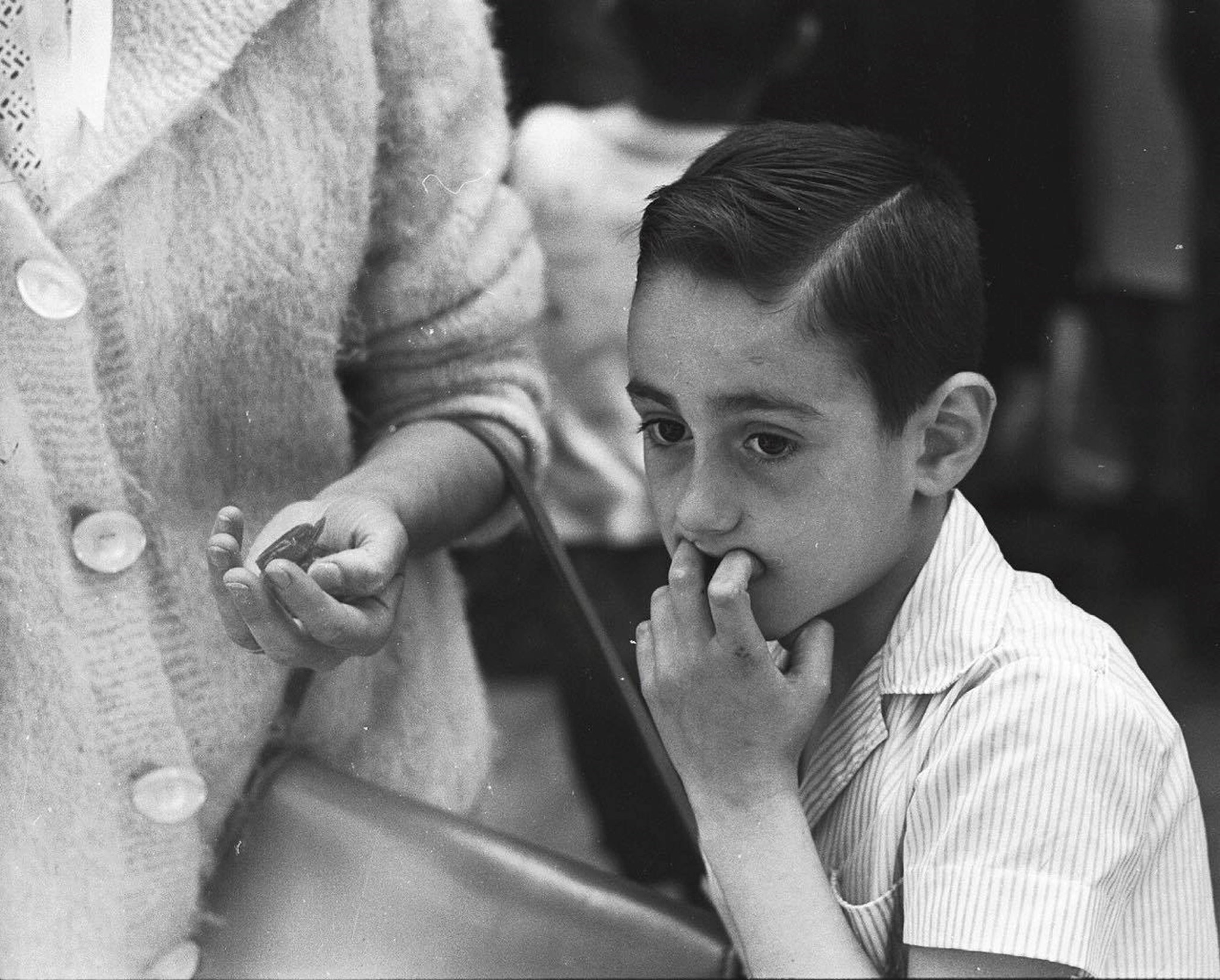Photography: Milagros Caturla / Tom Sponheim Collection
In 2001 Tom Sponheim, a tourist from the USA, bought around a hundred black and white negatives, of what appeared to be European cityscapes, at Barcelona's Encants flea market for just over three euros. Upon his return to Seattle he scanned them and it became clear that they had been taken by someone with great talent, but someone whose identity was unknown. It so happened that Sponheim had lost his family photo albums while they were being moved from California to Washington and these captivating prints of a European city filled the gap they had left by adorning the walls of his house and, one way or another, becoming part of his life.

Photography: Milagros Caturla / Tom Sponheim Collection

Photography: Milagros Caturla / Tom Sponheim Collection
It was not until the definitive emergence of social media, such as Facebook, at the end of the first decade of the 21st century that Tom Sponheim saw that it might be possible to identify the photographer who had taken these pictures. And he succeeded. It was not easy to start with. He had to resort to advertising his Facebook page, "The Lost Photographs of Barcelona", but it paid off. On 12 January 2017 something important happened. Carles Cols, a journalist at El Periódico newspaper, took up the mantle with an article entitled, "Search for photographer deserving praise". The article finished with these words, "The search is on for the photographer who took these wonderful pictures. Whoever it was deserves praise, both here and in Seattle. If we are lucky, the search will continue". The story, which is reminiscent of the one about John Maloof and the discovery of Vivian Maier's photographs, did continue, with surprising results.

Photography: Milagros Caturla / Tom Sponheim Collection

Photography: Milagros Caturla / Tom Sponheim Collection
News of the search reached the ears, or to be more precise, the Facebook page, of someone with a passion for amateur photography and swing music, Begoña Fernández Díez. Last March she managed to identify the photographer as Milagros Caturla who, in 1962, had won the 4th Women's Provincial Photography Prize. Carturla was a qualified teacher but worked as a civil servant in Barcelona Provincial Council. She died, alone and without descendants, of Alzheimer's disease in 2008, leaving behind her a photographic legacy only part of which we are probably aware of. Milagros Caturla was a member of the interesting Women's Photographic Group of Catalonia, whose members also included Maria Antònia Gumà and Glòria Salas Bulbena, who celebrated her 101st birthday on 20 April 2017. Begoña Fernández resolved to rescue the lives and works of these pioneering photographers of the 1950s and '60s, a period in which photography was still dominated by men.

Photography: Milagros Caturla / Tom Sponheim Collection

Photography: Milagros Caturla / Tom Sponheim Collection
As was the case with Vivian Maier, Milagros Caturla's photographs in Barcelona were taken during the early 1960s. There are many children in her photographs, at religious ceremonies for specific festivals, in the streets and squares of the Raval and Gothic quarters of the city, and in schoolrooms. Begoña Fernández says the photographs express a very feminine viewpoint. She said, "I identified with those photographs, as if I had taken them myself. How was it that the photographer had such an intimate approach with the pupils at a girls' school, or with those at a dance school? I had a feeling about them. After researching in the press and the documentation of the time, it became clear, without a shadow of a doubt, that the photographer was a woman".

Photography: Milagros Caturla / Tom Sponheim Collection

Photography: Milagros Caturla / Tom Sponheim Collection
At the Women’s' Photographic Group of Catalonia, Begoña Fernández had the good luck to find its former president, Francesca Portolés. With her invaluable help Begoña was able to consult the Group's publications and it was in their pages that she found the first photograph that would enable her to identify Milagros Caturla as the photographer who took Tom Sponheim's photographs. One of the negatives that he had in his house in Seattle corresponded to one which was awarded fourth prize in the third competition organised by the Barcelona Falange's Women's Section in 1961. It was called Fervor and the photographer was Milagros Caturla. That same year she was awarded the second prize (Eugeni Forcano was awarded the first prize) for her photograph entitled, Festa Major de Gràcia, at the National Artistic Photography Salon. The cameras she used were a Leica M2, with a Canon 85 mm lens, and occasionally, an Ikoflex, which have unfortunately not survived. It was probably while she was moving house, from a large residence in Carrer de València to smaller one in Carrer dels Capellans, near Plaça Nova, that she decided to part with her photographic equipment.

Photography: Portrait of Tom Sponheim / Tom Sponheim Collection

Photography: Portrait of Milagros Caturla / Tom Sponheim Collection
Milagros Caturla Soriano was born in Barcelona in 1920, the seventh of ten children, and daughter of a lieutenant colonel in the infantry. In October 1957 she joined the Women’s' Photographic Group of Catalonia and a few months later, in April 1958, she was awarded the third prize in the Group's mixed men and women's photographic competition. Her story then is of the rediscovery of her photographs of Barcelona by Tom Sponheim and their identification by Begoña Fernández Díez, a fascinating story about Milagros Caturla that has resonated throughout the world thanks to the coverage it has received in the media. Once again Barcelona's Encants flea market has been a treasure trove of interconnected personal stories with an unexpected outcome. The Revela-T Festival in Vilassar de Dalt is holding the world première exhibition of Milagros Caturla's photographs in the Tom Sponheim collection, undoubtedly only the first event in a more ambitious project to recover the life and work of someone many already consider to be the Catalan Vivian Maier.
Daniel Venteo.
